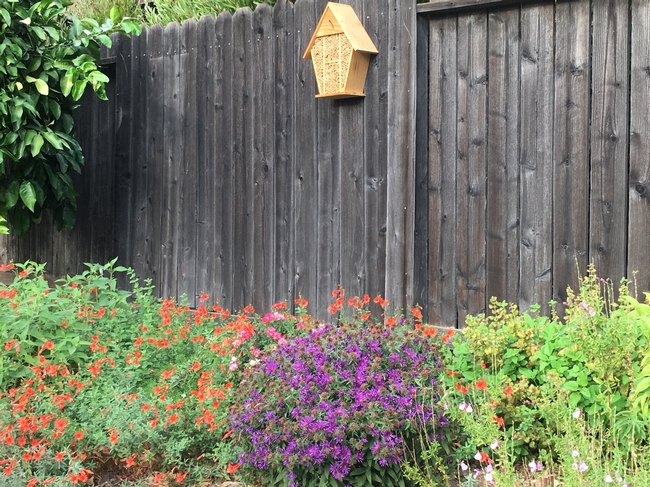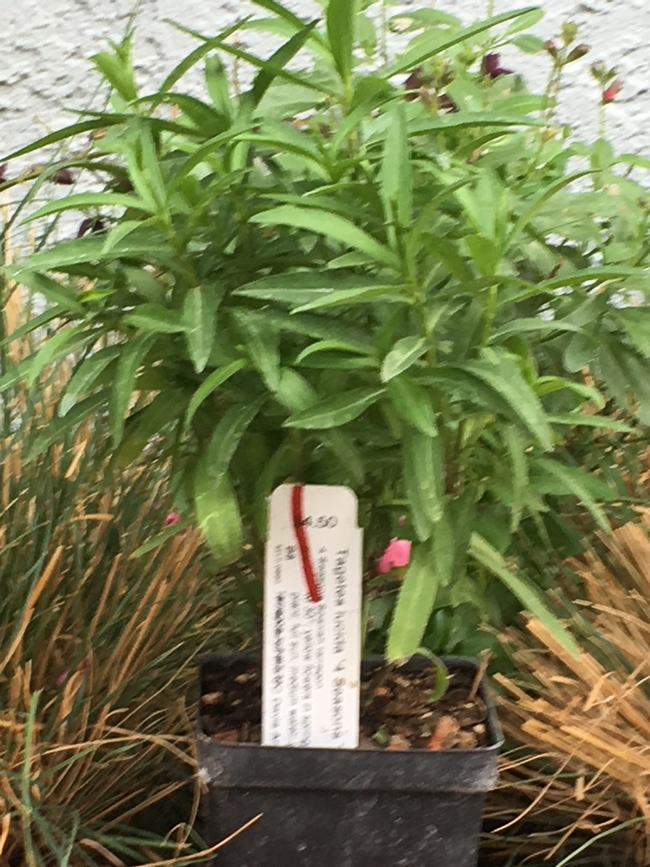Mexican Marigold
At last Saturday's plant sale at the UC Davis Arboretum, I bought a Tagetes lucida. You might know it by one of its numerous other names: Mexican mint marigold, sweet-scented marigold, Santa Maria, Yerba Anise, African Marigold, Sweet Mace, Pericon, winter tarragon, Spanish tarragon, and Mexican tarragon. Technically, this plant is not a true tarragon. French tarragon (or German tarragon if you live in Germany) is Artemisia dracunculus. Its flowers are tiny and green, and the leaves are used a lot in French cooking. Their flavor is described as herbal or fresh. You may remember adding it while making béarnaise - it is a key ingredient in the sauce.
Mexican tarragon is thought to taste like French tarragon, but with a bit of anise or licorice flavor as well. Mexican tarragon's leaves are similar to the French variety, but the flowers look like those of single marigolds – 5-petaled and bright yellow, hence the name “lucida” meaning light or bright.
Mexican tarragon's use has been traced back to the Aztec culture in Guatemala. It was used to add peppery warmth to a cocoa beverage called chocolatl, as a good luck charm for safe passage across waterways, and to ward off demons while harvesting maize. The whole plant was also used to treat gastrointestinal problems and colds.
Today's cook can add the fresh or dried flower petals and/or the fresh young leaves to corn, tomatoes, squash, avocados, summer fruits, eggs, fish and chicken. In some cultures, it is an added flavoring for alcoholic beverages, cakes, and custards. A little bit, finely chopped, goes a long way.
One of its best features of Tagetes lucida is that it attracts bees, butterflies, and birds and also repels some of the not-so-wanted insects in the garden. It is a perennial in USDA zones 9 through 11 attaining a height of about 2 ½ to 3 feet. It likes full sun but will take partial shade. A freeze will cause it to die back, but it should return in the spring. It requires good drainage and is drought-tolerant, but it does better with some water, just not on the leaves. Wherever the stems touch the ground, it can sprout a new plant. It can also reseed.
I will be planting it near my pineapple sage in a bed with mostly herbs. Wish it and me luck!

photos by Michelle Davis

IMG 0687


Posted by Kathy Klobas on October 10, 2018 at 11:54 AM